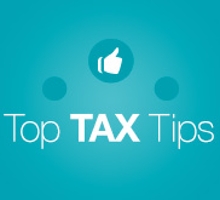New £500,000 Inheritance Tax Threshold from 2017
 Chancellor of the Exchequer George Osborne announced during the emergency (summer) Budget earlier this month that the current Inheritance Tax threshold is set to increase from 2017, adding an extra £175,000 allowance per-person on homes left to children or grandchildren.
Chancellor of the Exchequer George Osborne announced during the emergency (summer) Budget earlier this month that the current Inheritance Tax threshold is set to increase from 2017, adding an extra £175,000 allowance per-person on homes left to children or grandchildren.
This figure will be added to the current tax-free threshold of £325,000, for a total per-person, tax-free allowance of £500,000. As both allowances are transferable between your spouse or partner (should you die before your spouse or partner, they will receive your allowance on top of their own), if you choose to pass your home down to your children or grandchildren from 2017 you’ll be able to pass on up to £1 million free from Inheritance Tax.
Speaking at the House of Commons on 8 July, Mr. Osborne said:
“The wish to pass something on to your children is about the most basic, human and natural aspiration there is. Inheritance tax was designed to be paid by the very rich. Yet today there are more families pulled into the inheritance tax net than ever before – and the number is set to double over the next five years. It’s not fair and we will act.”
Tax Rate to Remain
Under the new rules, estates valued between £1-2 million will pay tax at 40 percent over the £1 million mark, or the £500,000 mark for single parents or grandparents if their spouse or partner used their allowance previously, or didn’t pass their unused allowance on to them.
It should be noted that the new £500,000 per-person threshold will ‘taper’ away for estates worth more than £2 million. With that said, should you choose to downsize your home you won’t lose your tax-free allowance from your previous property.
Current Inheritance Tax System
Under the current system, individuals receive a tax-free threshold of £325,000, with spouses and partners being able to combine their allowances. The only difference between the current system and the new one, due to be phased in in 2017, is the new system adds an extra £175,000 allowance per person, thus increasing it to £500,000.
The original £325,000 threshold is fixed until the end of the 2020-21 tax year, after which there is potential for its renegotiation.
In its current form, Britain has some of the strictest Inheritance Tax rates in the developed world, with The Telegraph reporting that a parent splitting their £1 million estate (£800,000 property, £200,000 cash) between two children currently results in a £270,000 tax bill. Under the new system, this bill will reduce to £200,000 in the same scenario, making it lower than the Inheritance Tax paid on an equivalent inheritance in both France and Japan.
More Information on Inheritance Tax Threshold
To speak with a professional accountant to discuss what the new Inheritance Tax threshold means for you, your property, and those you wish to inherit it, contact us today on 020 8780 2349 or get in touch with us via our contact page to arrange a complimentary, no-obligation meeting.
The Advantages of Completing Your Tax Return Early
 Nobody enjoys the hassle of having to file their Tax Return, especially when you’ve left it to the last minute and find yourself having to rush around (amid panicked phone calls to your accountant) to get everything sent over to HM Revenue and Customs (HMRC) before the 31 January, online, or 31 October, paper, deadline.
Nobody enjoys the hassle of having to file their Tax Return, especially when you’ve left it to the last minute and find yourself having to rush around (amid panicked phone calls to your accountant) to get everything sent over to HM Revenue and Customs (HMRC) before the 31 January, online, or 31 October, paper, deadline.
If, as a small or medium-sized (SME) business owner, you recently received a letter in the post telling you it’s time for you to complete your annual Tax Return, you may want to consider getting it done early this year in order to avoid the otherwise inevitable rush.
And if that doesn’t convince you, maybe the following four points will:
You’ll Get a Tax Refund Faster
If you complete your Tax Return early, and pay any tax owed, you’ll receive a tax refund much sooner (assuming you’re owed tax back) than if you submit your Tax Return and money owed in January; especially towards the end of the month nearing the 31 January online deadline.
There’s no downside to receiving a tax refund sooner; and though interest rates may not be the highest they’ve ever been, the sooner you receive your tax return the sooner it can be sat back in your bank account earning interest!
You Can Manage Your Cash Flow Better
With that said, if you complete your Tax Return early you don’t have to pay the tax you owe until the 31 January deadline (and the 31 July second payment deadline, should this apply to you).
This buffer between filing and payment allows you to manage your cash flow better, as, depending on the size of your tax bill, you can make a budget to ensure you put a certain amount aside each month up until January ahead of making your payment.
You’ll Avoid Any Potential Penalties
If you file your Tax Return late (or send a payment late) you’re automatically issued with a £100.00 penalty; even if you miss the mark by just a few hours.
For this reason, when you submit your Tax Return and payment early you’ll avoid a wealth of expensive fees and penalties that could have otherwise come your way if you’d filed late, including a:
- £100.00 late filing penalty,
- £10.00 daily penalties after 3 months, up to £900.00,
- £300.00, or 5 percent of your tax due after 6 months,
- £300.00, or 5 percent of your tax due after 12 months.
You Can (Potentially) Use a Tax Code
If you’re a small business owner who owes less than £3,000 in tax payments and you complete your Tax Return by 30 December, you can opt to have your tax collected through your tax code over the coming year in a bid to spread out your payments.
If your business’s small size means you’re currently receiving tax credits or benefits, consider submitting your Tax Return before 31 July in order to send the Tax Credit Office real, up to date income figures (rather than estimates) to help you receive the tax credits or benefits you’re owed sooner.
Experienced Tax Accountants
To speak with a professional to discuss how to complete your Tax Return (both the collection and submission process), or for any other reason, contact us today on 020 8780 2349 or get in touch with us via our contact page to arrange a complimentary, no-obligation meeting.
Take Advantage of Your Capital Gains Tax (CGT) Allowance
 Your Capital Gains Tax (CGT) Allowance, also known as your Exemption Limit or Annual Exempt Amount, is the amount of profit you can make on the sale of property or an investment in a given year before you pay Capital Gains Tax on the amount above this figure.
Your Capital Gains Tax (CGT) Allowance, also known as your Exemption Limit or Annual Exempt Amount, is the amount of profit you can make on the sale of property or an investment in a given year before you pay Capital Gains Tax on the amount above this figure.
You can find out your personal capital gains amount in a given year by deducting any losses and reliefs from the gains you made, thus uncovering your capital gains profit.
For the current, 2015-16, tax year the tax-free allowance is set at £11,100 for individuals (and trustees of disabled individuals; defined as somebody who has mental health problems or receives middle or higher rate of Attendance Allowance or Disability Living Allowance), and £5,550 for other trustees.
Making Use of Your Capital Gains Tax (CGT) Allowance
As everybody who is liable to pay Capital Gains Tax can receive this allowance, it’s possible for you and your spouse or partner to make effective, legal use of your combined allowances to ensure you pay as little tax on your capital gains as possible by transferring assets between you, or placing them in joint names before an impending sale.
This method is deemed wholly legal by HM Revenue and Customs (HMRC) as couples are often looked upon as a joint unit, despite the fact that each partner receives an individual Capital Gains Tax Allowance.
Another way you can make best use of your allowance, should you be expecting to make a particularly large gain, is to spread the monetary release of this gain over a number of tax years so to make full use of your tax exemption limit, assuming this is an acceptable option for you.
Capital Gains Tax (CGT) Rates
Any capital gains profit you make in a given year that’s over your Capital Gains Tax Allowance will be taxed at the Capital Gains Tax rates for that year.
The rates for the current, 2015-16, tax year haven’t changed since 2013, with the rate you have to use depending on the total amount of taxable income you make in the year in question (including profit from your small business, dividends, and salary payments). These rates are currently:
- 18% or 28% for individuals
- 28% for trustees or representatives of someone who has died
- 10% for capital gains that qualify for Entrepreneurs’ Relief
Experienced Capital Gains Tax (CGT) Accountants
Whether you’re a small to medium-sized business (SME) owner, or you’re looking to sell some property or investments in the near future, consider using our free Capital Gains Tax Calculator to estimate your capital gains liability, once your tax-free allowance has been deducted.
To speak with a professional tax accountant to discuss how to make the most of your (and your spouse/partner’s) Capital Gains Tax Allowance, contact us today on 020 8780 2349 or get in touch with us via our contact page to arrange a complimentary, no obligation meeting.
New Enterprise Bill Plans to Reduce Red Tape for Small Businesses
 Touched upon in last month’s Queen’s Speech, Business Secretary Sajid Javid recently put forward a new Enterprise Bill that’s designed to help reduce regulation on small businesses so they can concentrate on growth and will, in turn, create jobs.
Touched upon in last month’s Queen’s Speech, Business Secretary Sajid Javid recently put forward a new Enterprise Bill that’s designed to help reduce regulation on small businesses so they can concentrate on growth and will, in turn, create jobs.
Speaking at the Engine Shed business centre in Bristol, Mr. Javid is quoted:
“Small businesses are Britain’s engine room and the success of our whole economy is built on the hard work and determination of the people who run and work for them. As Business Secretary I will always back them and, in my determination to get the job done, one of my first steps will be to bring forward an Enterprise Bill that helps them to succeed and create jobs.”
The Enterprise Bill commits to cutting red tape for small businesses by at least £10 billion over the next five years, with a European Union (EU) Commission also being put together to cut EU red tape, though it’s unclear what affect the upcoming EU referendum could have on these efforts. The Bill also commits to forming a Small Business Conciliation Service to settle late payment disputes.
Small Business Conciliation Service
Designed to settle disputes between small and large businesses over late payments, the Small Business Conciliation Service allows small business owners to avoid expensive legal costs that would otherwise make challenging late payment fees an irresponsible use of their time and capital, as they fear their chances of success are slim.
Speaking in Bristol, the Business Secretary said, “There’s a situation familiar to small business owners up and down the country. A letter turns up from a larger customer changing payment terms, or charging them to remain a supplier and in some cases even deducting that charge on the spot against payment owed. This pattern of behaviour is an outrage. It’s bullying – pure and simple.”
Issues around payment can affect small businesses from both sides. According to the Government, small businesses across the country are currently (as of May 2015) owed over £32 billion in late payments by larger companies, yet the majority of these small businesses are either unaware of their rights surrounding the collection of these payments, or they’re reluctant to bring legal challenges.
Asking for Small Business Input
Speaking at the same event in Bristol, Business Minister Anna Soubry noted that the Government will be speaking with small businesses up and down the country over the coming months to ask for their help in identifying areas that are creating “needless burdens” for small business owners, both at home and in Europe.
Commenting on the Enterprise Bill, Ms. Soubry highlighted the importance of the Government getting behind small businesses, noting, “This will be a no nonsense bill to back small businesses and help create jobs, giving financial security and economic peace of mind to hardworking people across the country.”
Experienced Accountants who can assist you with the New Enterprise Bill
If your small or medium-sized business (SME) is currently inundated with “needless burdens” and Government red tape, consider speaking with one of our professional, experienced accountants here at Tax Agility. We’ve been working with SME owners for many years, helping them to resolve disputes and receive the money they’re owed.
To speak with a professional to discuss what the new Enterprise Bill means for your business, or for any other reason, contact us today on 020 8780 2349 or get in touch with us via our contact page to arrange a complimentary, no-obligation meeting.
Ten Ways to Pay Less Tax
 Looking for smart ways to pay less tax should be seen as a critical part of your tax planning, both on behalf of your personal finances and the finances of your business.
Looking for smart ways to pay less tax should be seen as a critical part of your tax planning, both on behalf of your personal finances and the finances of your business.
Though some may feel that doing all you legally can to keep your tax bill as low as possible isn't something they would wish to be associated with, the truth is you're already paying for these reliefs and allowances to be used by others.
Regardless of how you feel about them, these reliefs, allowances, and exemptions are here to stay.
The only question is – are you going to use them, or be used by them?
Tax Tips and News for June 2015
This issue … Make the Best of Allowances; Non-resident Capital Gains Tax; EIS Assurance; Staff Clothes; June Question and Answer Section; June Key Tax Dates
Make the Best of Allowances
As the sole owner/director of your company you face a dilemma over how to extract income from that company. If you pay yourself a salary of more than £8,060 per year you will have to pay class 1 NIC at the rate of 12% on the excess pay above that threshold up to £42,385 pa. However, income tax is not due until your salary tops £10,600 (the value of your personal allowance for 2015/16).
One solution is to take a salary of up to £8,060 and any further income as dividends of up to £30,892 pa (£34,325 gross including the 10% tax credit). This combination would mean a zero tax and NIC bill, but gives you an NI credit to qualify for the state pension. However, £2,540 of your personal allowance is "wasted" as the 10% dividend tax credit can't be reclaimed when the personal allowance is set against a dividend.
If your spouse receives a salary that exceeds their personal allowance, but does not pay 40% tax another adjustment is possible. You can now transfer £1,060 of your personal allowance to your spouse. This will allow them to save tax of £212 (£1,060 @20%).
However, to avoid you slipping into the 40% tax bracket you must also reduce the level of dividends you take to a maximum of £29,938 (£33,265 gross) for 2015/16. The result is that the family as a whole has the same tax allowances, but the income tax paid has decreased by £212.
Non-resident Capital Gains Tax
If you are involved with sales of UK residential property where the buyer or seller is tax-resident outside of the UK, you need to be aware of a new tax that came into effect on 6 April 2015: non-resident CGT (NR CGT).
The NR CGT charge is applied at different rates according to whether the seller is a non-resident closely-held company, fund, individual, personal representative or trustee. It applies to gains made in the period from 6 April 2015 to the disposal date of the property, so a small amount of tax likely to be payable on property sales made in 2015/16.
However, when such a sale is made a NR CGT return must be submitted to HMRC within 30 days of the conveyance of the property, and this must be done online. The return must be made whether there is any NR CGT to pay or not, where there is a loss on the disposal, and even where the taxpayer is due to report the disposal on their own personal or corporate self-assessment tax return.
Where the vendor is not registered for UK income tax, corporation tax or the annual tax on enveloped dwellings (ATED), the NRCGT charge must be paid within 30 days of the conveyance date. This payment can only be made once the NRCGT return has been submitted and HMRC have replied with a reference number to use when making the payment. There are penalties for failing to file the NR CGT return on time, and failing to pay the tax on time.
If the taxpayer is registered for UK tax they can opt to pay the NRCGT due at the same time as the tax due for their normal personal or corporate tax.
Conveyancing solicitors need to be aware of the very tight tax reporting and payment deadlines. Property developers need to warn non-resident customers that they will be liable to tax on any gain made when they sell the residential property and that gain includes any discount in the price achieved by buying "off-plan".
EIS Assurance
The Enterprise Investment Scheme (EIS) provides some very attractive tax incentives for investors who subscribe for shares in small companies. If you are thinking of attracting investors using the EIS you should first get an advance assurance from HMRC that your company will qualify.
However, HMRC has recently changed the conditions under which it will give that advanced assurance. It will no longer grant assurance for an EIS application if the company is:
- over 7 years from its first sale and has not received funding under the EIS, or other tax advantaged venture capital scheme; or
- has received more than £10 million in funding under those schemes.
There is an exception to the 7-year rule for companies that are seeking to raise over 50% of their average annual turnover under the EIS in one go, and this is the company's first attempt at using one of those tax-advantaged venture capital schemes.
There are also new conditions for the investor. He or she must hold no shares in the company at the time they make their first EIS investment, ignoring any subscriber shares issued when the company was founded, and shares already issued under SEIS or VCT.
Staff Clothes
If you provide clothes for your staff to wear at work you need to be aware of the tax and VAT implications which may vary according to the items provided.
Where the items provided constitute a uniform or protective clothing which is needed to perform the job, the cost is tax deductible for the business and the VAT can be reclaimed. There is no taxable benefit in kind for the employee.
If the clothes are not considered to be a "uniform" and can't qualify as protective clothing, the tax treatment depends on whether the employees are permitted to keep the items.
Where ownership of the items effectively passes to the employee you should generally treat the provision of the clothes as a sale at cost price, in which case you must account for VAT as if the clothing items had been sold at the cost to you. This can apply when sales staff in a clothing store are given clothes to wear from the store's range, and are not required to return those clothes if they leave the company's employment. The value of the clothes provided may also be a taxable benefit for the employee, which needs to be accounted for either on the annual form P11D or as part of a payroll settlement agreement (PSA).
Where the value of the items provided to any one employee is less than £50 in the tax year, the provision can be treated as a business gift by the employer. In this case the employer does not treat the value of the clothes as a sale. The taxman may also agree that the value of the clothes is a trivial benefit which is not taxable on the employee. However, it is best to establish this position with the tax office in advance. We can help you with that.
June Question and Answer Section
Q. I work as a self-employed air-conditioning engineer, which involves servicing and maintaining air-conditioning units and occasionally fitting new units. I would like to take advantage of the flat rate VAT scheme for small businesses, but I am confused as to what business category to choose. Do you have a suggestion?
A. It is crucial to choose the right business sector when registering for the flat rate scheme, as the sector can't be changed retrospectively. The higher the flat rate percentage (which is determined by the business sector), the more VAT you have to pay over to HMRC each quarter.
If the majority of your income comes from other businesses it would be sensible to choose "business services not listed elsewhere" which carries a flat rate percentage of 12%. If the larger proportion of your income is from individuals then the business category "repairing personal or household goods" may be more appropriate, which carries a flat rate percentage of 10%. You must choose the business category which is appropriate to the largest slice of your income, and review that decision every year on the anniversary of entering into the flat rate scheme.
Q. Following the relaxation of the pension rules in April I took a cash lump sum from my pension scheme but the pension company deducted tax from the payment. I have no other income in this tax year so I shouldn't have to pay any tax. How do I get that tax back?
A. You make a tax refund claim using one of the online forms on the GOV.UK website designed specifically for this situation (form P55, P50Z or P53Z). The form to use depends on whether you have other income or not and whether you have taken out your entire pension pot or not. We can advise you which tax reclaim form is right for your circumstances.
Q. My father employs a care-worker to provide personal care for his disabled wife in their home. The cost is significant, including NIC and PAYE. Is there anything he can do to reduce the cost?
A. People who employ care-workers in their own homes can claim the employment allowance for 2015/16 which is worth up to £2,000 to set against the employer's national insurance contributions (NIC). The allowance wasn't available for such employers in 2014/15 due to the general block on using it against class 1 NIC due on the pay of domestic workers, but the law changed in April 2015.
Your parents may also qualify for state support such as the Attendance Allowance and Disability Living Allowance which are not taxable. If your mother is aged under 65 she may qualify for Personal Independent Payment (PIP).
June Key Tax Dates
19/22 - PAYE/NIC, student loan and CIS deductions due for month to 5/6/2015
We are committed to ensuring none of our clients pay a penny more in tax than is necessary and they receive useful tax and business advice and support throughout the year.
If you need further assistance just let us know – we're here to help!
Contact us today on 020 8780 2349 to discuss how any of the above affects your personal or business finances or get in touch with us via our contact page to arrange a complimentary, no-obligation meeting.
This blog is a general summary. It should not replace professional advice tailored to your specific circumstance.
Understanding Accounting Periods for Corporation Tax
 Understanding your accounting period in terms of the Corporation Tax your company has to pay is essential in ensuring you pay on time, every time.
Understanding your accounting period in terms of the Corporation Tax your company has to pay is essential in ensuring you pay on time, every time.
Everything we’re going to touch upon below can be accomplished by your accountant, though in several instances they’ll need input from you in order to make sure all dates and monetary figures line up. If you’ve yet to hire an accountant, or you wish to seek some advice about your accounting period from an outside professional, our contact details are at the bottom of this article.
Your Accounting Periods for Corporation Tax
In the majority of cases your accounting period for Corporation Tax will be be twelve months long, and should start and end in parallel with your company’s financial year; which for the majority of companies (unless you specifically chose for this to be different) is aligned with the tax year: starting on 6 April and ending on 5 April each year.
If you’re unsure of your accounting period for Corporation Tax, you or your accountant can log into HM Revenue and Customs (HMRC) online services, under which you’ll be able to locate these dates.
Shorter Accounting Periods
It’s possible, through no fault of your own, that your accounting period for Corporation Tax is shorter than the standard twelve months.
The typical reasons why this may be the case is because you completed your first accounts period in business (which may be less than twelve months), you recently restarted your business, or you chose to shorten your financial year.
In this situation you (or your accountant) will likely have to send more than one company tax return, though this will vary between companies. Although it’s possible to read about the specifics yourself, your accountant will have significantly greater experience in this area, and should at least be consulted of your plans, as they’ll likely have the knowledge needed to speed this process along.
Longer Accounting Periods
Though it’s not possible for your accounting period to last longer than twelve months, it is possible for your accounts to cover a longer period, therefore even though your accounts will be seen as one continual period, your accounting period for Corporation Tax will be divided into two periods; one that’s twelve months long, and one consisting of the remaining time.
Of course, if you stop trading at any point during your accounts, your accounting period will be split in half anyway, with you (or your accountant) having to complete a Company Tax Return for both periods.
Corporation Tax Cut to 20%
From 1 April 2015 Corporation Tax was cut to 20%, making it the lowest in the entire G20, and the largest reduction in Corporation Tax ever brought into effect in a single parliament. It is, of course, impossible to predict whether this reduction will remain in place.
Experienced Accounting Professionals
To speak with a professional to discuss your accounting periods for Corporation Tax purposes, contact us today on 020 8780 2349 or get in touch with us via our contact page to arrange a complimentary, no-obligation meeting.
Capital Gains Tax for Non-UK Residents on Residential Property
 From 6 April 2015 non-UK residents wishing to sell or dispose of a UK residential property will be required by law to contact HM Revenue and Customs (HMRC) to let them know, as Capital Gains Tax (CGT) may be due on any gains made.
From 6 April 2015 non-UK residents wishing to sell or dispose of a UK residential property will be required by law to contact HM Revenue and Customs (HMRC) to let them know, as Capital Gains Tax (CGT) may be due on any gains made.
This new capital gains tax for non-UK residents comes after an open consultation was held by the Government between 28 March and 21 June 2014 in a bid to discuss the best way to implement a CGT charge on non-UK residents.
Who’s Affected
According to the Government, the new CGT will affect non-UK residents (individuals or trustees), personal representatives of non-resident deceased persons, and certain non-resident companies. These companies are mainly micro businesses controlled by five or less persons — speak with your accountant if you’re unsure if this includes your company.
Certain UK residents who dispose of UK property when abroad will also be affected, as will any of the above persons, trustees, or companies who are partners in a partnership.
If you fall into the affected group you’ll be required to contact HMRC within thirty days of selling or disposing of a UK residential property to establish whether you have a gain. You can tell HMRC of your sale or disposal online, and they advise that further information on this matter is due to follow.
Calculating Your Gain
When calculating your gain keep in mind that only the overall amount of gain after 5 April 2015 is chargeable, therefore the Government recommend that you work out your gain in one of two ways:
- Rebasing: Establish the exact value of your property on 5 April 2015, after which you calculate your gain between then and the day your sale is completed.
- Apportioning: Apportion the whole gain on the length of time you owned the property after 5 April 2015, compared to the total time you’ve owned it.
If you know you’ll be selling within the next few months it’s a good idea to record the overall value of the property at the start of April, as this will make the job of valuing it once it sells that much easier. We recommend bringing in an independent valuer (or two), as this will ensure HMRC are less likely to query it.
The Government advise that the amount you’ll pay will depend on the value of your gain between 6 April 2015 and the day your sale is completed, whether or not you have unused losses to take advantage of, and the amount of private residence relief you may hold. Other factors that could affect the amount you pay include whether or not you have an annual exemption limit, the amount of indexation allowance (if you’re a company), and the current CGT rate.
Experienced Capital Gains Tax (CGT) Accountants
To speak with a professional to discuss this new Capital Gains Tax for non-UK residents, contact us today on 020 8780 2349 or get in touch with us via our contact page to arrange a complimentary, no-obligation meeting.
Types of Business Financing
 Business financing comes in many forms. The types of business financing you need at any one moment depend on a variety of factors, including the amount of money you’re looking to borrow, whether you’re prepared to provide personal assets (such as your home) as security, and whether you’re comfortable with the prospect of selling shares in your company.
Business financing comes in many forms. The types of business financing you need at any one moment depend on a variety of factors, including the amount of money you’re looking to borrow, whether you’re prepared to provide personal assets (such as your home) as security, and whether you’re comfortable with the prospect of selling shares in your company.
Below we’ve detailed seven of the most common types of business financing currently available in the UK. To speak with a professional regarding what financing method is most suitable for your business in your current situation, our contact details are below.
Investment Finance
Sometimes referred to as equity finance, you receive investment finance whenever you sell shares in your company to an investor.
The advantages of this method are that you don’t have to pay interest on their investment, and your investor will be useful in bringing new skills, ideas, and opportunities to your business, as they have a financial interest in your success. Disadvantages of this method, however, are that only limited companies can sell shares (not sole traders or partnerships), and you’ll end up owning a smaller percentage of your company.
If you are starting a new venture or have a small business in the UK, you may qualify for funding via the Enterprise Investment Scheme (“EIS”) and/or the Seed Enterprise Investment Scheme (“SEIS”). There are a number of requirements that need to be met. For a quick overview and more information on the schemes, read our pages on EIS and SEIS.
Loans
Loans are a form of immediate credit, paid into your bank account, that you must then repay over an agreed period of time with interest. Loans are ideal for achieving startup capital or paying for necessary assets, but they should not be used to pay for ongoing, monthly expenses.
Advantages of loans are that they’re not repayable on demand (see ‘overdrafts’ below) and you don’t have to give up a portion of your company. Disadvantages include the fact that most loans are incredibly inflexible, and the ability to meet your loan payments may sometimes be out of your control; such as when customers don’t pay you on time.
Overdrafts
Overdrafts are a short-term means of achieving credit from the bank you hold your business current account with; they are not a source of long-term financing.
The advantages of borrowing via an overdraft are that you can do so any time and, unlike most loans, you’re not usually charged for paying off your overdraft early. Disadvantages, however, are the fact that you’re charged when you exceed your overdraft limit, and your bank can terminate your overdraft at any moment.
Grants
Grants are a specific sum of money that’s awarded to you (as a business or individual) to undertake a chosen project.
Advantages of receiving a grant, whether from the Government, your local council, or elsewhere, are the fact that grants don’t need to be repaid and you won’t have to hand out shares in your company. The main disadvantage of grants is the fact that there’s consistently fierce competition for them, therefore to have any chance of receiving one you must focus in on a specific area of expertise and apply for a grant based on a project that’s related to your business, that you haven’t yet started.
Crowdfunding
The popularity of crowdfunding for business financing has grown in recent years due to a number of sites such as Kickstarter and Indiegogo coming onto the scene as a way of letting businesses and individuals receive crowdfunding finance from around the world.
The advantages of crowdfunding are it allows you to raise finance relatively quickly; rather than having to persuade one investor to hand you a large sum of money, you have to convince a large number of people to hand you a tiny sum of money each. One major disadvantage of crowdfunding, however, is the fact that if you don’t reach your fundraising target within a set time period, all money raised up to that point will be returned to investors.
Invoice Financing (Factoring and Invoice Discounting)
Invoice financing is a method of business financing whereby another company (an invoice financier) buys your unpaid invoices from you for a fee. There are two methods of invoice financing:
Factoring
Your sales ledger is handed over to an invoice financier, with them paying you a percentage of each invoice (approx. 85%) upfront. They’ll then collect all money owed from your customers for you, handing you the remainder of the balance, with you paying them interest on the original sum they paid you, along with their fees.
The main advantage of this method is the fact that you no longer have to worry about chasing invoices, but conversely your customers may prefer dealing with you directly.
Invoice Discounting
Your invoice financier will lend you funds against your unpaid invoices, with you paying them a fee for doing so. When your customers eventually pay their invoices this money will go directly to your invoice financier.
Advantages of invoice discounting are that you can maintain your close relationships with your customers, as they’ll have no idea you’re borrowing money against their invoices. Disadvantages of this method, however, are that you lose a certain percentage of each invoice, and you still have to collect the debts yourself.
Leasing and Asset Finance
Rather than seeking out financing to pay for a necessary business asset you may wish to lease or rent assets (such as vehicles or machinery) so you don’t have to deal with the cost of purchasing them until you have more capital under your belt.
Advantages of this method are that you’ll be able to lease higher-quality assets than you can currently afford to buy, and the leasing company are the ones at risk if your assets break. Disadvantages, however, include the fact that long contracts are often difficult to cancel prematurely, and in most cases you’ll have to provide the leasing company with a number of upfront payments and a deposit.
Experienced Advice on Types of Business Financing
To speak with a professional to discuss which method of business financing is most suitable for you in your current situation, contact us today on 020 8780 2349 or get in touch with us via our contact page to arrange a complimentary, no obligation meeting.
This blog is a general summary. It should not replace professional advice tailored to your specific circumstance.
What Does Your Tax Code Mean?
 Does your tax code look like a foreign language to you? We thought it may be useful to explain in simple terms how you can understand what your tax code means and how you can work out what your tax-free personal allowance is.
Does your tax code look like a foreign language to you? We thought it may be useful to explain in simple terms how you can understand what your tax code means and how you can work out what your tax-free personal allowance is.
So, what is a tax code? Your tax code is a short code worked out by HMRC that’s then sent over to your employer or pensions provider so to ensure the correct amount of income tax (PAYE), or other taxes, are taken from your salary or pension each month.
Read more









